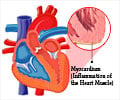A study to be published in PLoS ONE has indicated that heart attacks and strokes may have been rare for the vast majority of human history.
"Understanding how physiological systems respond in [indigenous] populations helps us better understand conditions in countries like the United States at the beginning of the 20th century," said senior author Eileen Crimmins of the USC Davis School of Gerontology. "This also offers some insight into the worlds we evolved in."Crimmins, lead author Michael Gurven (University of California, Santa Barbara) and an international team of scientists looked at a remote Amazonian tribe in Bolivia known as the Tsimane. They measured various predictors of heart disease such as hypertension, obesity, diet and smoking habits. (The Tsimane grow and harvest their own tobacco.)
"The Tsimane were chosen because they still live a relatively traditional lifestyle: fishing, hunting, engaged in horticulture, gathering, living in extended family clusters and without much access to modern amenities," Gurven explained. "There are other groups with similar lifestyles, but often those groups have very small population numbers. . . . The Tsimane population is large enough — about 9,000 — that we can study almost all of the adults over age 40."
With only limited access to medical services, half of documented deaths among the Tsimane are due to infectious or parasitic disease. About two-thirds of the population has intestinal worms, the researchers found.
"We looked at a lot of populations in both developed and developing countries, in urban and rural settings, but none live in the relatively isolated and infected conditions of the Tsimane," the researchers write.
Chronic inflammation, which may lead to damage of the arteries, is prevalent among the Tsimane. According to the study, the Tsimane also have unusually high levels of C-reactive protein, increasingly used in clinical settings to evaluate risk for cardiovascular disease.
Advertisement
In fact, peripheral arterial disease "increases with age in every investigated population except the Tsimane," according to the study. Among the Tsimane, not a single adult showed evidence for peripheral arterial disease (measured using the ankle-brachial blood pressure index).
Advertisement
The researchers note that the Tsimane may have a distinct genetic expression compared to people in developed countries. Specifically, there is overexpression of the human leukocyte antigen, which has been linked in cell studies to plaque erosion.
"We observed low levels of atherosclerosis and associated cardiovascular disease among Tsimane, suggesting that these conditions may have been rare throughout pre-industrial human history," Crimmins said. "We may not be built for the world we live in. The Tsimane are perhaps a better model for the world we are built for."
"We don't know for sure that as younger people today get older that [arterial disease] won't increase," Gurven said. "More heart disease may be on the horizon if lifestyles change rapidly."
Source-Eurekalert
RAS















